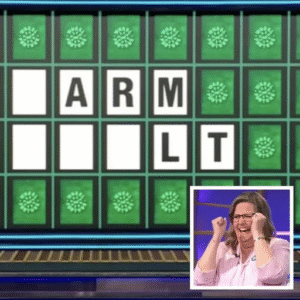Tiny homes have experienced a remarkable rise in popularity over the past decade, fueled primarily by escalating housing costs, increased urbanization, and a growing global focus on sustainability and environmental responsibility. Once considered a fringe movement embraced mainly by minimalists and environmental activists, tiny homes have now evolved into a broad lifestyle choice that appeals to a diverse range of people—from young professionals seeking financial freedom to retirees wanting to downsize and simplify their lives. This shift reflects a cultural change toward valuing freedom, simplicity, and meaningful living over material excess.
At the core of the tiny home movement is the idea that less can truly be more. Tiny homes typically range from 100 to 400 square feet, a stark contrast to the average American home size, which is over 2,000 square feet. This drastic reduction in living space forces residents to be intentional about what they own and how they live, encouraging a minimalist approach where every object must serve a purpose or bring joy. This deliberate downsizing often leads to profound psychological benefits, including reduced stress, increased mindfulness, and a greater sense of control over one’s environment and lifestyle.
From an environmental perspective, tiny homes offer significant advantages. Due to their small footprint, they consume far less energy for heating, cooling, and general upkeep compared to traditional houses. This smaller scale directly translates into lower greenhouse gas emissions and a reduced carbon footprint. Many tiny homes incorporate cutting-edge green technologies, such as rooftop solar panels, energy-efficient LED lighting, composting toilets, rainwater harvesting systems, and passive solar design principles that optimize natural light and ventilation. These features enable many tiny homeowners to live partially or completely off-grid, reducing dependence on fossil fuels and municipal utilities, and fostering a closer relationship with nature.
Financially, tiny homes present an attractive alternative to conventional housing. The average cost to build or buy a tiny home is significantly lower than that of a standard house, often costing between $30,000 and $80,000 depending on the design and materials used. This affordability allows many people to avoid crippling mortgage debt and the financial strain that comes with homeownership. Additionally, because of their size and simplicity, tiny homes have much lower ongoing expenses—including utilities, property taxes (in some cases), and maintenance—freeing up residents to allocate money toward experiences, savings, or early retirement.
A key appeal of tiny home living is its flexibility and mobility. Many tiny homes are built on trailers, allowing owners to tow their home to new locations whenever they desire. This mobility is particularly appealing to those who value travel, seasonal living, or the ability to escape urban centers for quieter, rural areas. It also offers a sense of security in uncertain times, as owners can relocate if economic or environmental conditions change.
The cultural impact of tiny homes extends beyond individual benefits. Growing numbers of tiny home communities are forming worldwide, where residents share common values around sustainability, cooperation, and simple living. These communities often feature shared gardens, communal workshops, and cooperative childcare, fostering a strong sense of connection and social support. Living in such intentional communities helps combat loneliness and isolation, challenges often faced in modern urban environments. The cooperative spirit of tiny home neighborhoods can also lead to innovative solutions for local resource management and sustainable development.
The tiny home movement is also influencing mainstream housing and urban planning. Architects and developers are incorporating small, efficient living spaces into affordable housing projects, recognizing the demand for alternatives to sprawling suburban homes. Cities are adapting zoning laws to accommodate tiny homes and accessory dwelling units (ADUs), reflecting a shift toward more inclusive and diverse housing options. These changes have the potential to address housing shortages, reduce homelessness, and promote environmental resilience on a larger scale.
Despite these advantages, tiny home living is not without challenges. Limited space requires careful organization, and residents often must sacrifice privacy or storage. Not everyone adapts easily to the minimalist lifestyle or the restrictions of compact living. Additionally, zoning laws and building codes in many areas can complicate tiny home ownership, limiting where these homes can legally be placed or lived in full-time. However, advocates continue to push for policy reforms to make tiny homes more accessible and accepted.
For many who embrace this lifestyle, tiny homes are not just dwellings—they are expressions of values and identity. Residents frequently speak of tiny living as a path to greater freedom, creativity, and connection to what truly matters in life. The ability to own a home without overwhelming debt, to reduce one’s environmental impact, and to live with intentionality resonates deeply in an era marked by rapid change and growing uncertainty.
In summary, tiny homes offer a compelling alternative to traditional housing, blending affordability, sustainability, and lifestyle freedom into a holistic package. They challenge conventional notions of what a home must be, proving that a small space can be a big source of joy, purpose, and community. As society continues to grapple with the dual pressures of economic inequality and environmental crises, the tiny home movement stands as a hopeful model for a more balanced and meaningful way of living.
Tiny homes have experienced a remarkable rise in popularity over the past decade, fueled primarily by escalating housing costs, increased urbanization, and a growing global focus on sustainability and environmental responsibility. Once considered a fringe movement embraced mainly by minimalists and environmental activists, tiny homes have now evolved into a broad lifestyle choice that appeals to a diverse range of people—from young professionals seeking financial freedom to retirees wanting to downsize and simplify their lives. This shift reflects a cultural change toward valuing freedom, simplicity, and meaningful living over material excess.
At the core of the tiny home movement is the idea that less can truly be more. Tiny homes typically range from 100 to 400 square feet, a stark contrast to the average American home size, which is over 2,000 square feet. This drastic reduction in living space forces residents to be intentional about what they own and how they live, encouraging a minimalist approach where every object must serve a purpose or bring joy. This deliberate downsizing often leads to profound psychological benefits, including reduced stress, increased mindfulness, and a greater sense of control over one’s environment and lifestyle.
From an environmental perspective, tiny homes offer significant advantages. Due to their small footprint, they consume far less energy for heating, cooling, and general upkeep compared to traditional houses. This smaller scale directly translates into lower greenhouse gas emissions and a reduced carbon footprint. Many tiny homes incorporate cutting-edge green technologies, such as rooftop solar panels, energy-efficient LED lighting, composting toilets, rainwater harvesting systems, and passive solar design principles that optimize natural light and ventilation. These features enable many tiny homeowners to live partially or completely off-grid, reducing dependence on fossil fuels and municipal utilities, and fostering a closer relationship with nature.
Financially, tiny homes present an attractive alternative to conventional housing. The average cost to build or buy a tiny home is significantly lower than that of a standard house, often costing between $30,000 and $80,000 depending on the design and materials used. This affordability allows many people to avoid crippling mortgage debt and the financial strain that comes with homeownership. Additionally, because of their size and simplicity, tiny homes have much lower ongoing expenses—including utilities, property taxes (in some cases), and maintenance—freeing up residents to allocate money toward experiences, savings, or early retirement.
A key appeal of tiny home living is its flexibility and mobility. Many tiny homes are built on trailers, allowing owners to tow their home to new locations whenever they desire. This mobility is particularly appealing to those who value travel, seasonal living, or the ability to escape urban centers for quieter, rural areas. It also offers a sense of security in uncertain times, as owners can relocate if economic or environmental conditions change.
The cultural impact of tiny homes extends beyond individual benefits. Growing numbers of tiny home communities are forming worldwide, where residents share common values around sustainability, cooperation, and simple living. These communities often feature shared gardens, communal workshops, and cooperative childcare, fostering a strong sense of connection and social support. Living in such intentional communities helps combat loneliness and isolation, challenges often faced in modern urban environments. The cooperative spirit of tiny home neighborhoods can also lead to innovative solutions for local resource management and sustainable development.
The tiny home movement is also influencing mainstream housing and urban planning. Architects and developers are incorporating small, efficient living spaces into affordable housing projects, recognizing the demand for alternatives to sprawling suburban homes. Cities are adapting zoning laws to accommodate tiny homes and accessory dwelling units (ADUs), reflecting a shift toward more inclusive and diverse housing options. These changes have the potential to address housing shortages, reduce homelessness, and promote environmental resilience on a larger scale.
Despite these advantages, tiny home living is not without challenges. Limited space requires careful organization, and residents often must sacrifice privacy or storage. Not everyone adapts easily to the minimalist lifestyle or the restrictions of compact living. Additionally, zoning laws and building codes in many areas can complicate tiny home ownership, limiting where these homes can legally be placed or lived in full-time. However, advocates continue to push for policy reforms to make tiny homes more accessible and accepted.
For many who embrace this lifestyle, tiny homes are not just dwellings—they are expressions of values and identity. Residents frequently speak of tiny living as a path to greater freedom, creativity, and connection to what truly matters in life. The ability to own a home without overwhelming debt, to reduce one’s environmental impact, and to live with intentionality resonates deeply in an era marked by rapid change and growing uncertainty.
In summary, tiny homes offer a compelling alternative to traditional housing, blending affordability, sustainability, and lifestyle freedom into a holistic package. They challenge conventional notions of what a home must be, proving that a small space can be a big source of joy, purpose, and community. As society continues to grapple with the dual pressures of economic inequality and environmental crises, the tiny home movement stands as a hopeful model for a more balanced and meaningful way of living.





